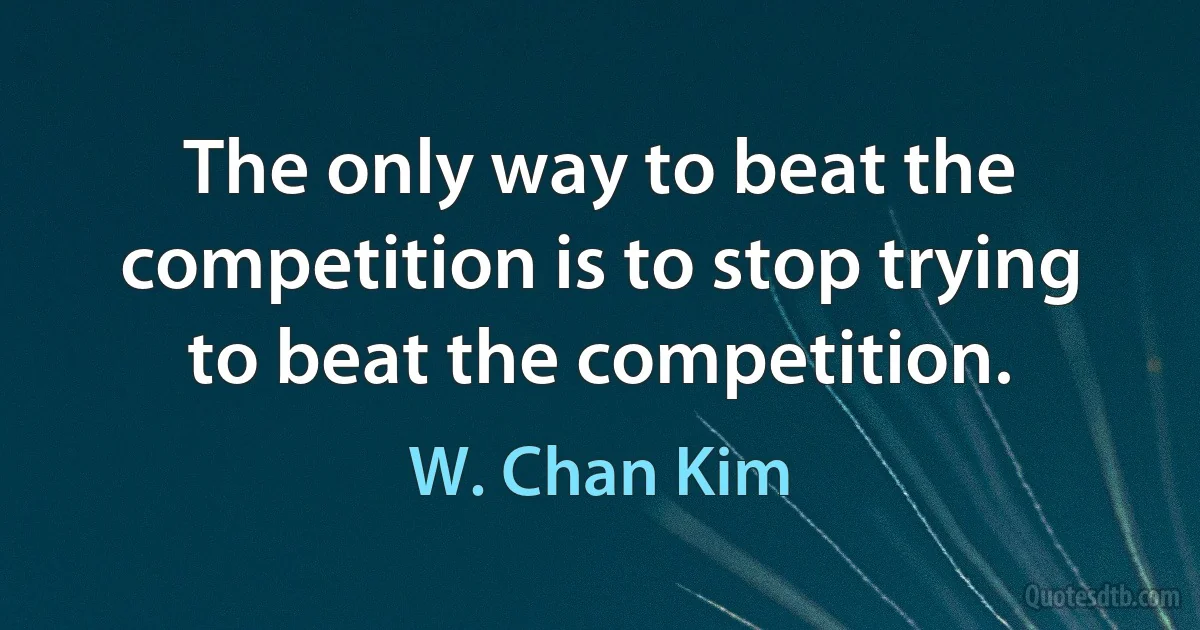W. Chan Kim quotes
Value innovation is the cornerstone of blue ocean strategy. We call it value innovation because instead of focusing on beating the competition, you focus on making the competition irrelevant by creating a leap in value for buyers and your company, thereby opening up new and uncontested market space.

W. Chan Kim
Value innovation is created in the region where a company's actions favorably affect both its cost structure and its value proposition to buyers. Cost saving are made by eliminating and reducing the factors an industry competes on. Buyer value is lifted by raising and creating elements the industry has never offered. Over time, costs are reduced further as scale economics kick in due to the high sales volumes that superior value generates.

W. Chan Kim
In a nutshell, Blue Ocean Strategy proposes that strategy can shape industry structure, whereas competitive strategy sees strategy as choosing the right position under given structural constraints. The field of strategy has been long dominated by a structuralist view; in other words, the idea that the industry's structure is fixed. Strategy, as commonly practiced, tees off with industry analysis and is conventionally about matching a company's strengths and weaknesses to the opportunities and threats present in the existing industry. Here, strategy becomes a zero-sum game where one company's gain is another company's loss, as firms are bound by existing market space.

W. Chan Kim
The document normally kicks off with a lengthy description of current industry conditions and the competitive situation. Next is a discussion of how to increase market share, capture new segments, or cut costs, followed by an outline of numerous goals and initiatives. A full budget is almost invariably attached, as are lavish graphs and a surfeit of spreadsheets. The process usually culminates in the preparation of a large document culled from a mishmash of data provided by people from various parts of the organization who often have conflicting agendas... Executives are paralyzed by the muddle. Few employees deep down in the company even know what the strategy is.

W. Chan Kim
The market universe is composed of two types of oceans: red oceans and blue oceans. Red oceans are all the industries in existence today; they are increasingly characterized by intense competition. Blue oceans are all the industries not in existence today; they are untouched and uncontested. To prosper in the future, companies need to go beyond competing; they need to create blue oceans. The issue is how to do so.

W. Chan Kim

